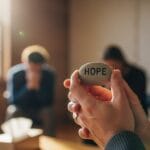There’s a lot of interest in the impact of mobile health devices. With the proper apps and plug-ins, a device like an iPhone can capture and transmit medical data for diagnosis or disease management. Such mobile health devices can be useful tools for helping prevent disease and promoting good health through patient monitoring and followup.
There’s a lot of interest in the impact of mobile health devices. With the proper apps and plug-ins, a device like an iPhone can capture and transmit medical data for diagnosis or disease management. Such mobile health devices can be useful tools for helping prevent disease and promoting good health through patient monitoring and followup.
Since I cover health IT and medical software for my company, Software Advice, I recently decided to see what it would be like to design some of these devices myself. You can read about those apps in my earlier post; this post, however, is reserved for commenting on what that process taught me about what a mobile medical device needs to be successful.
Here’s the short list.
1) Keep users coming back: the Firefly test.
Being able to run off an iPad or iPhone can make a medical device less intimidating to a potential remote monitoring user–most people are familiar with iPhone user interfaces.
But to really get patients to want to use the device, designers have to get clever. Otherwise once the novelty wears off, the app might quickly be forgotten, as researcher Laura O’Grady pointed out to me in discussions via email. Behavior change is the challenge, she stressed.
What clever solutions have we seen work to get people to change over the long term? Here’s an example: behavioral change researchers at the Pervasive Action Lab in the UK found that user-friendly displays could significantly influence behavioral change.
They used a path of twinkling lights resembling blinking fireflies to lead office workers to the stairs and cause them to skip the elevator. This twinkling path, most likely because it was “aesthetic, public, fun, informative and compelling”, according to the researchers, was able influence people to take the stairs much more effectively than ordinary signage, promoting weight loss.
Designers should remember these firefly lights and strive to make a device or app’s interface with patients go beyond just capturing, displaying and sharing data. Instead, they should aim to make the way the patient interacts with the app memorable, delightful, endearing.
If we really want patients to use these telehealth tools for preventative care, we have to make using them worth their time. Just because the app or device you created was written up in prestigious journals or praised by your peers doesn’t mean patients will actually benefit from it. Designers should think of patients, not peers, as the ultimate judge they want to impress.
2) Get users to act on the data: the “Work With vs. Work At” test.
Another researcher, Natalie Jeremijenko, has examined motivating behavior change through another endearing means of communication: robotic dogs that have been programmed to sense their surroundings, then communicate information about their surroundings through their movements.
Jeremijenko theorized that if people are given information from animal-like devices that show, through their “behavior,” whether an area has healthy or dangerous air quality, then the people would internalize the information and be more likely to act on it than they might be to another boring data printout or sign full of numbers and text.
She noted that the design “inspires people to act, to investigate, to collect evidence and use it to affect change.”
Similarly, good mobile medical devices will work with users to engage with and motivate them. If users must work at using the device regularly, they’ll probably start to ignore it soon.
Integrating peer networks into mobile health devices is one way designers can work with patients. A study by M. Chiu et al., appropriately called “Playful Bottle”, looked at how a mobile app could get people to drink more water throughout the day. The study found that, when people got social reminders about how much water their coworkers were drinking, they not only drank more water, but also drank more frequently, than they did when they were just given reminders alone.
Relating this to our discussion on mobile medical devices: pre-diabetic kids could be enticed to exercise by an app that records their exercise levels and also connects them to a network of other kids striving for the same goals.
3) Address Overlap by Collaborating: the Get Outside Your Silo test.
Through my email exchange with Jeff Jorgenson, the Assistant Director of the Office of Telemedicine at UCSF and SFGH about the mobile health devices I designed, I also learned that collaboration among designers doesn’t happen as often as it should. Jorgenson observed that “current solutions in the marketplace tend to be very vertical.” In other words, many designers are working in silos.
Why should mobile health device and app designers take a less insular approach? Two reasons.
First, it would save them time and money. Developers could use a common framework (the approach Jorgenson’s Office of Telemedicine advocates). For progress to happen at the fastest rate, to be able to help the most people, Jorgenson pointed out, “there’s a need to efficiently replicate functionality and keep costs low.”
Second, mobile health device designers should collaborate because, given the number of comorbidities that exist, it’s necessary. Multiple specialists and disciplines need to be involved in an effort that seeks to truly address user needs.
Thanks to Dr. Marlene Maheu, Laura O’Grady, and Jeff Jorgenson for their help with writing this article.





